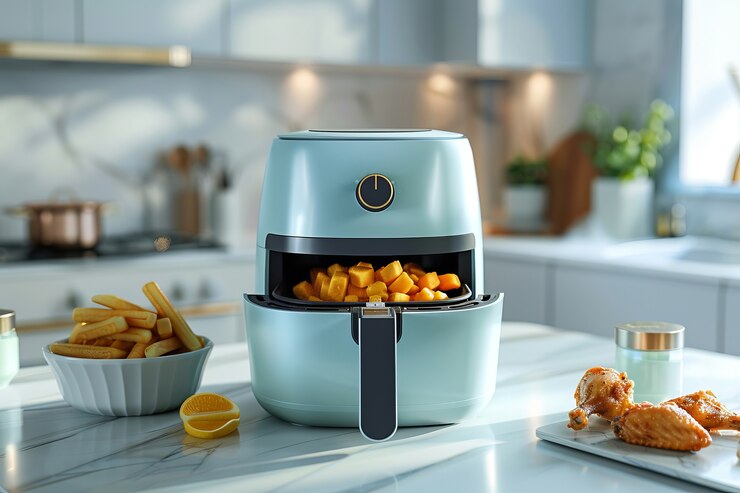How Pressure Monitoring Affects Frying Efficiency in Kitchens
The Science Behind Pressure and Frying
Frying is faster and better under pressure. In a pressure fryer, the sealed space makes the pressure inside higher and the boiling point of the water in the food higher. You can cook food at higher temperatures without allowing it to dry out. This keeps the food’s natural juices, which makes it moist and crispy, and it cooks faster. This faster way of cooking saves energy and makes food taste and feel better, which makes the kitchen work better.
When the pressure is high, oil has a harder time getting in. You consume less oil when you cook quickly and evenly. The end result is less greasy and lighter. Keep the pressure steady to get these benefits. Food can cook unevenly, get soggy, or turn brown even with small changes. Kitchens can make sure that every batch of fried food meets high standards by keeping an eye on and controlling the pressure. For the perfect frying, you should use the latest tools, such as Henny Penny 16910 pressure gauge.
Energy Consumption and Cost Efficiency
By saving energy, pressure monitoring directly makes the kitchen work better. Fryers are used less per batch because high-pressure frying cooks food faster. This cuts down on the amount of gas and electricity used. Busy commercial kitchens can save a lot of money over time.
Pressure cooking makes food cook faster and uses less oil, so you have to change it less often. Oil breakdown is a frying problem that costs a lot of money and hurts quality. Pressure frying keeps food and oxygen from coming into contact with oil, which keeps it from breaking down. Keeping an eye on the pressure makes sure the cooking conditions are just right and the oil lasts longer. This lowers the cost of food and makes it better.
Food Quality and Consistency
In professional and commercial kitchens, pressure monitoring directly keeps food quality and consistency. When people order fried chicken, seafood, or vegetables, they expect the same taste, texture, and look. Changes brought on by uneven pressure can make these hopes less likely to come true.
When you keep an eye on the pressure, food is less likely to be over- or undercooked. This consistency helps the kitchen staff plan their work so they can do more than one thing at once without affecting the quality of the food. It cuts down on the number of dishes that are thrown away or remade, which makes customers happier and more productive.
The Role of Digital Monitoring and Automation
In the last few years, technology has made it possible for commercial fryers to have digital pressure monitoring systems. These systems keep an eye on pressure levels in real time and send alerts to keep them stable. Automation frees up staff to do other things instead of always checking the heat and pressure.
These smart fryers keep track of data, which helps kitchen managers keep track of changes. Trends help them fry better, plan maintenance, and follow food safety rules. Automation cuts down on mistakes made by people, which is a big reason why food quality and pressure levels change.
Digital pressure monitoring is helpful in places with a lot of foot traffic, like fast food restaurants. It’s easier to train new employees when the equipment works correctly. Businesses with more than one location can also make sure that their frying processes are the same at all of them to make sure the food is always good.
Impact on Kitchen Workflow and Staff Efficiency
Monitoring pressure affects more than just frying; it affects the whole kitchen. When cooking times are shorter and consistency is guaranteed, workflow is easier to predict. The kitchen staff can get things ready, cook them, and plate them faster and with less guesswork.
Teams can handle busy times better when they know how long things will take to cook and what the results will be. This makes customers happy and cuts down on wait times. Frying doesn’t need as much supervision, so skilled workers can do other things.
Checking the pressure regularly makes work less stressful and makes routines clearer. There are fewer mistakes and less food waste in the kitchen. There are both technical and management benefits to keeping an eye on pressure.
Sustainability and Environmental Considerations
Food sustainability is becoming more and more important. Pressure monitoring makes kitchens more eco-friendly. Businesses that keep an eye on their pressure use less energy, oil, and food.
Less oil means less trash, which is better for the planet. Shorter cooking times lower carbon dioxide emissions in kitchens that use gas or electricity that can’t be replaced. Monitoring makes people more aware of how they use resources, which helps kitchens become more eco-friendly without losing performance.
These small improvements add up. Restaurants that keep an eye on frying system pressure save money and have less of an impact on the environment, which can bring in customers who care about the environment.
Conclusion
In today’s busy kitchens, it’s very important to check the frying pressure. Monitoring the pressure keenly makes oil last longer, makes food safer, and makes sure that the taste stays the same. If you own a restaurant or work in a commercial kitchen, measuring and applying pressure accurately may make frying a faster and more reliable way to cook. Allowing this degree of supervision in kitchens may improve performance and customer happiness.

